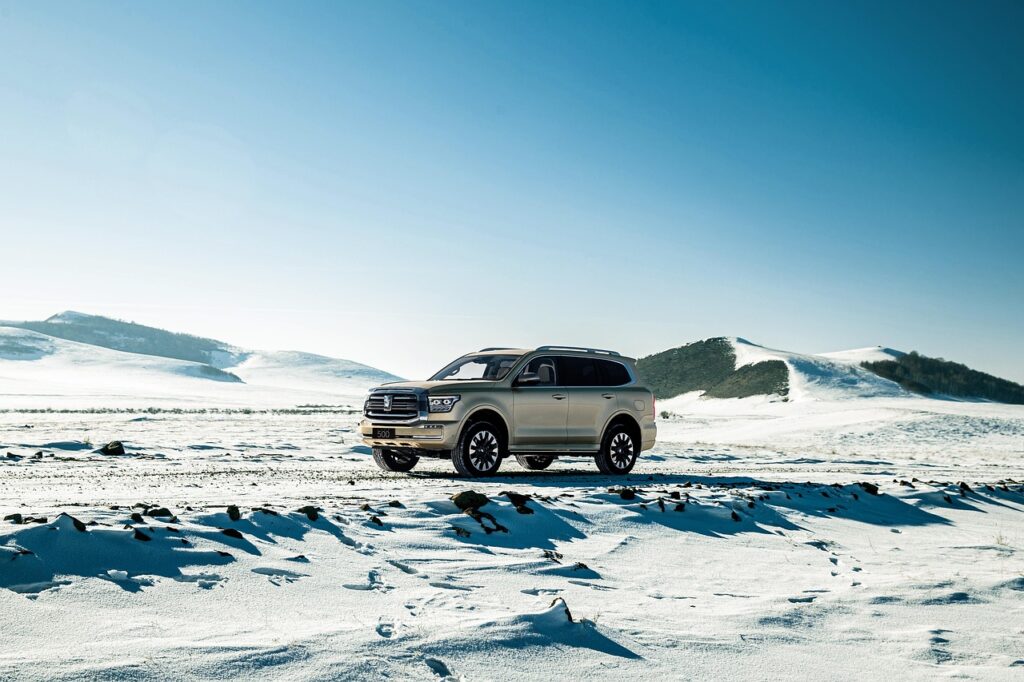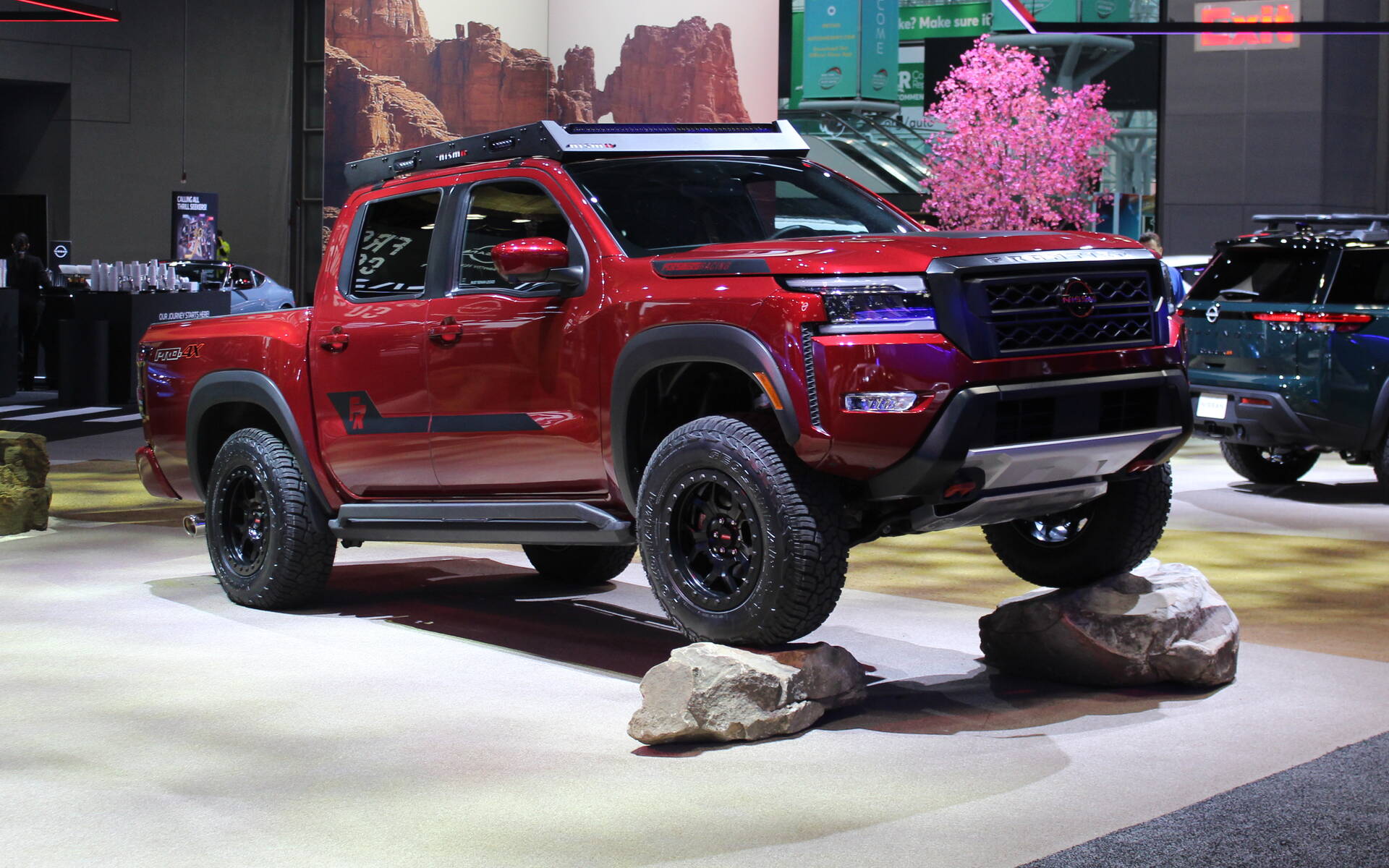Driving in snow presents a unique set of challenges, and finding the right vehicle can make all the difference between a stressful commute and a confident journey. It’s more than just one feature that determines a vehicle’s winter prowess. The best cars for snow boast an effective drivetrain, an array of crucial safety and driver-assist technologies, and comfort features designed to ease the strain of cold-weather driving. From automatically engaging rain-sensing wipers to essential heated seats, these elements combine to create a truly capable and reassuring winter vehicle.
While the driver remains the undeniable key factor when navigating snow- or ice-covered roads, the right combination of vehicle components, advanced technologies, and intelligent systems can significantly enhance safety and competence. This holds true for both seasoned Snowbelt drivers and those with less experience encountering slippery conditions. Understanding how a vehicle’s engineering supports safe operation is paramount, regardless of whether it’s a sedan, an SUV, or a pickup truck.
In our quest to identify which 2025 SUVs handle snow the best, we’ve carefully weighed these factors to bring you an in-depth look at models specifically designed to excel when the flakes start to fall. We delve into their specific attributes, from advanced all-wheel-drive systems to cutting-edge safety features, ensuring you have the reliable, trustworthy information needed to make an informed purchasing decision for your winter driving needs. Our comprehensive evaluation focuses on practical benefits and consumer-centric insights, guiding you toward the optimal choice for navigating snowy landscapes.
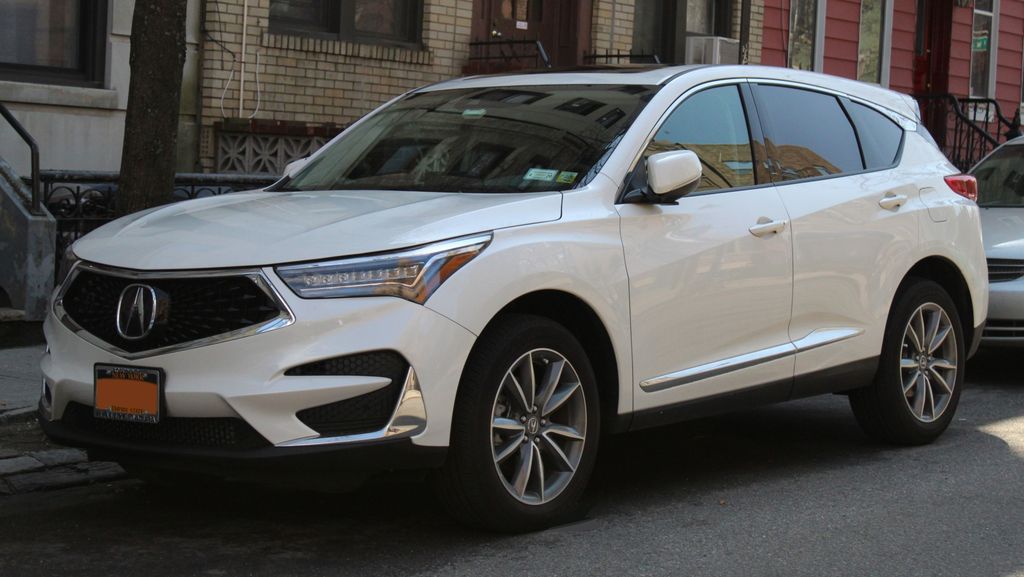
1. **2025 Acura RDX**
The 2025 Acura RDX stands out as a formidable contender for snow driving, thanks in large part to its standard Super Handling All-Wheel Drive (SH-AWD) system. This advanced drivetrain employs several sophisticated tricks to increase capability and traction, actively managing torque distribution. While the mechanics are rather complicated, the result is an efficient system capable of sending as much as 90% of torque to just one rear wheel when conditions demand. This dynamic power delivery ensures maximum grip and stability, making the RDX remarkably adept at navigating slippery surfaces.
Beyond its intelligent all-wheel-drive system, the RDX boasts decent ground clearance, coming in at 8.2 inches. This elevated stance is a significant advantage in snow, reducing the likelihood of plowing through deeper accumulation and helping to prevent undercarriage scrapes. A higher clearance also aids in avoiding unseen hazards that might be hidden beneath a blanket of snow, contributing to a safer and less stressful driving experience in wintery conditions.
Safety is a cornerstone of the RDX’s winter readiness, with a comprehensive suite of standard features. Every new RDX includes forward collision warning and automatic emergency braking, providing critical alerts and intervention to prevent accidents. Furthermore, standard LED headlights enhance visibility in low-light and snowy conditions, ensuring a clearer view of the road ahead. The RDX also earns an IIHS Top Safety Pick rating, reinforcing its commitment to occupant protection.
Comfort and convenience features are equally important for winter driving, and the RDX delivers generously. Standard heated outboard mirrors effectively melt fog, ice, and snow, providing a clearer view for the driver. Heated front seats are also a standard inclusion, offering immediate warmth and comfort on cold mornings. These thoughtful amenities contribute significantly to a more enjoyable and less fatiguing winter driving experience.
For those seeking even greater refinement and functionality, higher trim levels offer notable upgrades. Moving up to the Technology trim level, priced at $48,650, adds a rear camera washer, essential for maintaining clear rear visibility, along with blind-spot monitoring and rear cross-traffic alert. The Advance trim level, at $53,800, further enhances winter capability with rain-sensing wipers, LED fog lights, and a windshield wiper de-icer. Power for the RDX comes from a 272-hp 2.0-liter turbo 4-cylinder engine mated to a 10-speed automatic transmission, offering robust performance for its $46,050 starting price with AWD.
Car Model Information: 2023 Acura RDX Technology Package
Name: Acura RDX
Caption: 2019 Acura RDX
Manufacturer: Honda
Production: 2006–present
ModelYears: 2007–present
Class: Compact executive car,crossover SUV
BodyStyle: SUV
Related: Honda CR-V,Honda Civic
Categories: 2010s cars, 2020s cars, Acura vehicles, All-wheel-drive vehicles, All Wikipedia articles written in American English
Summary: The Acura RDX is a compact luxury crossover SUV produced by Acura since 2006 for the 2007 model year, a luxury vehicle division of Honda, as the second crossover SUV offering from the brand after the mid-size MDX. Since it was introduced, it has shared its platform with the Honda Civic and CR-V.
Get more information about: Acura RDX
Buying a high-performing used car >>>
Brand: Acura Model: RDX
Price: $35,212 Mileage: 21,765 mi.
Read more about: Behind the Badges: Uncovering the Shared DNA of 10 Automotive Icons Built in the Same Factories
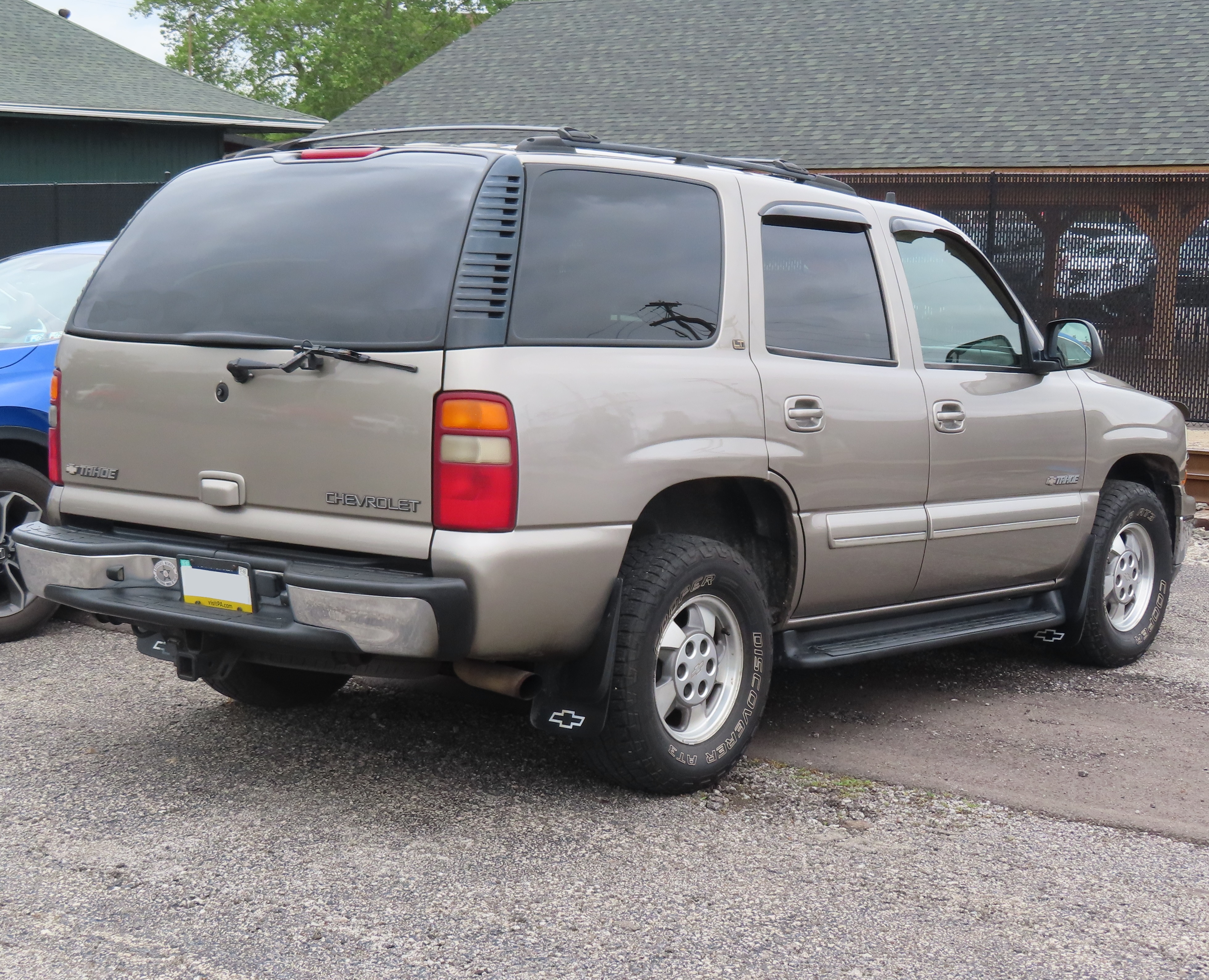
2. **2025 Chevrolet Tahoe**
The 2025 Chevrolet Tahoe is a formidable full-size SUV designed to tackle snow and other hazardous conditions with confidence. Available in six trim levels, all of which can be fitted with 4-wheel drive (standard in the Z71 trim), the Tahoe offers robust capability. Adding 4-wheel drive to the entry-level LS grade increases the base price to $63,495, a worthwhile investment for enhanced winter performance. This substantial vehicle is celebrated for its comfortable and roomy interior, making long winter drives more agreeable for all occupants.
Crucially, the Chevrolet Tahoe LS boasts an impressive 7.9 inches of ground clearance. This significant distance between the pavement and the vehicle’s undercarriage is a major advantage, reducing the likelihood of the vehicle plowing through deep snow. Higher clearance also plays a vital role in avoiding unseen hazards that can be obscured by snow, thus safeguarding the vehicle’s components and enhancing overall safety during winter travel. Its Expert Rating of 4.7 underscores its strong overall performance.
Standard convenience features on the Tahoe LS are well-suited for winter. Rain-sensing wipers automatically engage when moisture is detected on the windshield, including snow, providing consistent visibility without manual intervention. Remote start is also a standard inclusion, allowing drivers to warm up the engine, activate the heater, and defrost the windshield before entering the vehicle, enhancing comfort on cold days. These features significantly improve the daily winter driving experience.
The Tahoe’s comprehensive safety package includes critical driver-assist features that are particularly beneficial in snowy conditions. Forward collision warning and front-emergency braking are standard, providing alerts and automatic intervention to mitigate potential collisions. Additionally, standard LED headlights and taillights offer brighter illumination than traditional halogen lights, allowing drivers to see farther ahead and ensuring that the vehicle is more visible to traffic behind it, an important safety consideration in reduced winter visibility.
For those seeking to maximize safety, the $495 Driver Alert Package is a highly recommended option. This package adds essential features such as blind-spot monitoring and rear cross-traffic alert, which are invaluable when visibility is compromised by snow or ice. These systems help drivers avoid sudden steering adjustments or hard braking, two actions that can easily lead to loss of control on slippery roads. Power for the Tahoe is generated by a 355-hp 5.3-liter V8 engine, paired with a smooth 10-speed automatic transmission. The 2024 model, with an IIHS rating of 2/4, also remains a strong choice if the 2025 model is not yet available.
Car Model Information: 2024 Chevrolet Tahoe 4WD RST
Name: Chevrolet Tahoe,GMC Yukon
Manufacturer: General Motors
Production: 1991–present (Yukon),1994–present (Tahoe)
Class: Full-size SUV
Related: Cadillac Escalade,Chevrolet Suburban,Chevrolet Silverado,Hummer H2
Layout: Front-engine, rear-wheel-drive layout
Predecessor: Chevrolet K5 Blazer
Caption: 2022 Chevrolet Tahoe RST (fifth generation)
Categories: 2000s cars, 2010s cars, 2020s cars, All-wheel-drive vehicles, All articles with unsourced statements
Summary: The Chevrolet Tahoe () is a line of full-size SUVs from Chevrolet marketed since the 1995 model year. Marketed alongside the GMC Yukon for its entire production, the Tahoe is the successor of the Chevrolet K5 Blazer; the Yukon has replaced the full-sized GMC Jimmy. Both trucks derive their nameplates from western North America, with Chevrolet referring to Lake Tahoe; GMC, the Canadian Yukon.
Initially produced as a three-door SUV wagon, a five-door wagon body was introduced for 1995, ultimately replacing the three-door body entirely. The five-door wagon shares its body with the Chevrolet and GMC Suburban (today, GMC Yukon XL) as a shorter-wheelbase variant. Since 1998, the Tahoe has served as the basis of the standard-wheelbase GMC Yukon Denali and Cadillac Escalade luxury SUVs. The Tahoe is sold in North America, parts of Asia such as the Philippines, and the Middle East, plus other countries including Bolivia, Chile, Peru, Colombia, Ecuador, and Angola as a left-hand-drive vehicle. The Yukon is only sold in North America and the Middle East.
The Tahoe has regularly been the best-selling full-size SUV in the United States, frequently outselling its competition by two to one.
Get more information about: Chevrolet Tahoe
Buying a high-performing used car >>>
Brand: Chevrolet Model: Tahoe
Price: $63,888 Mileage: 23,406 mi.
Read more about: Beyond the Quarter-Million Mark: Our Shortlist of Cars Engineered for Extreme Longevity

3. **2025 Ford Bronco Sport**
The 2025 Ford Bronco Sport is engineered for adventure and practicality, proving exceptionally capable when confronting snow, mud, and dirt. It distinguishes itself by coming standard with all-wheel drive right out of the box, making it a ready-to-go option for winter challenges. While not as off-road capable as its larger sibling, the 4-wheel-drive Bronco, the Bronco Sport is perfectly suited for navigating various inclement weather conditions. Its starting price with AWD is $31,590, and it boasts an impressive Expert Rating of 4.6, along with an IIHS rating of 3/3 Good.
This SUV is designed to adapt to diverse terrains and conditions, offering five distinct driving modes. These modes allow drivers to optimize vehicle performance based on the specific challenges encountered, enhancing control and confidence on slippery surfaces. Standard LED exterior lights and high-beam assist further contribute to safety by providing superior illumination, ensuring clearer visibility during snowfall and low-light winter driving. The adaptive lighting helps illuminate the path more effectively.
The Bronco Sport is equipped with Ford’s comprehensive Co-Pilot360 driver aids bundle, a significant advantage for winter safety. This suite includes essential features like forward collision warning with automatic braking, which helps prevent frontal impacts by alerting the driver and, if necessary, applying the brakes. Lane-departure warning and lane-keeping assist are also integrated, helping maintain the vehicle’s intended path, crucial on slippery roads where sudden movements can be hazardous.
In addition to these proactive safety measures, blind-spot monitoring and rear cross-traffic alert come standard on the Bronco Sport. These systems are invaluable in winter, detecting vehicles that might be obscured by snow or difficult to see in mirrors, thereby helping drivers avoid dangerous lane changes or backing maneuvers. One of the surest ways to lose control on a slippery road is a sudden steering adjustment, and these features significantly reduce that risk by providing timely warnings.
For enhanced winter comfort and convenience, we recommend stepping up to the Outer Banks trim. This upgrade provides heated outboard mirrors, which quickly clear fog, ice, and snow, along with heated front seats for immediate warmth. Additional features include a rear-camera washer, ensuring clear visibility when backing up, dual-zone automatic climate control for personalized comfort, a heated leather-wrapped steering wheel, and rain-sensing wipers. The Bronco Sport is powered by a 1.5-liter turbocharged 3-cylinder engine paired with an 8-speed automatic transmission, delivering reliable performance.
Car Model Information: 2024 Ford F-150 XLT
Name: Ford Bronco Sport
ModelCode: CX430
Wheelbase: 105.1 in
Abbr: on (2.0)
Layout: Front-engine, all-wheel-drive
Designer: Paul Wraith
Sp: us
Related: ubl
Weight: convert
Height: convert
Width: 74.3 in
Length: 172.7 in
Transmission: Automatic Transmission
Engine: Gasoline engine,Ford Ecoboost engine,Ford Ecoboost engine
Platform: Ford C2 platform
Chassis: Unibody
BodyStyle: Sport utility vehicle
Class: Compact crossover SUV
Production: October 2020 – present
Assembly: Hermosillo,Sonora
Manufacturer: Ford Motor Company
ModelYears: 2021–present
Powerout: {{convert,181,hp,PS kW,0,abbr=on
Caption: 2021 Ford Bronco Sport Big Bend
Categories: All-wheel-drive vehicles, All Wikipedia articles written in American English, Articles with short description, CS1 Brazilian Portuguese-language sources (pt-br), CS1 Spanish-language sources (es)
Summary: The Ford Bronco Sport is a compact crossover SUV sold by the Ford Motor Company and marketed under the Ford Bronco nameplate. It was released alongside the sixth generation Bronco body-on-frame SUV, featuring a similar retro and off-road styling in a smaller footprint. The vehicle is based on the front-wheel drive-based, unibody C2 platform, which is also used by the Ford Escape crossover and Maverick pickup.
Get more information about: Ford Bronco Sport
Buying a high-performing used car >>>
Brand: Ford Model: Bronco Sport
Price: $41,604 Mileage: 9,645 mi.
Read more about: Smart Choices for the Golden Years: 12 Top SUVs Retirees Should Consider Buying in 2025
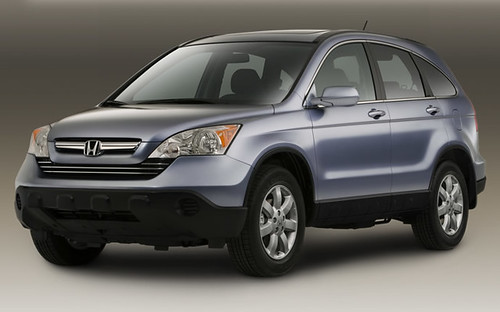
4. **2025 Honda CR-V**
The 2025 Honda CR-V stands out as a highly capable SUV for snow driving, with all-wheel drive available on every trim level except the Sport Touring Hybrid, where it comes standard. Opting for all-wheel drive is a smart move for winter preparedness, increasing the vehicle’s ground clearance to a substantial 8.2 inches. This added clearance is vital for clearing deeper snowdrifts and minimizing the risk of undercarriage damage, offering drivers greater confidence on unplowed roads. The CR-V starts at $32,995 with AWD and boasts an impressive Expert Rating of 4.8, along with an IIHS Top Safety Pick rating.
The EX trim, positioned as the second most affordable option, comes exceptionally well-equipped for winter conditions. It includes Honda Sensing driver-assist features as standard, providing a robust layer of safety. Among these are forward collision warning and front-emergency braking, which are crucial for detecting potential hazards and assisting in preventing accidents in reduced visibility or slippery situations. These systems offer peace of mind by actively monitoring the road ahead.
Visibility is paramount when driving in snow, and the CR-V addresses this with standard LED headlights and taillights. These provide brighter, more focused illumination compared to traditional halogen lights, allowing drivers to see farther down the road. Furthermore, the enhanced brightness of LED taillights ensures that the vehicle is more visible to traffic behind it, an essential safety factor in adverse weather conditions where visibility can be severely compromised by falling snow or sleet.
Beyond its safety features, the EX trim offers a suite of comfort and convenience amenities specifically beneficial for winter. Heated front seats provide quick warmth on chilly mornings, while heated outboard mirrors efficiently melt away ice and snow for a clear view. Blind-spot monitoring and rear cross-traffic alert are also standard, significantly enhancing awareness in tricky situations like parking lots or congested roads where snow can obscure other vehicles. The inclusion of LED fog lights further boosts visibility during severe weather.
Powering the CR-V is a reliable 190-hp 1.5-liter turbocharged 4-cylinder engine, managed through an automatic transmission. This powertrain delivers a balanced combination of efficiency and adequate power for daily driving and challenging winter conditions. With its comprehensive array of standard and available winter-ready features, the 2025 Honda CR-V presents itself as an excellent choice for consumers seeking a trustworthy and competent SUV for snow handling.
Car Model Information: 2020 Honda CR-V EX
Name: Honda CR-V
Caption: 2023 Honda CR-V e:HEV
Manufacturer: Honda
Aka: Honda Breeze (China, 2019–present)
Production: 1995–present
Class: Compact crossover SUV
BodyStyle: Sport utility vehicle
Layout: Front-engine, front-wheel-drive layout,Front-engine, four-wheel-drive layout
Chassis: Unibody
Predecessor: Honda Crossroad
Successor: Honda ZR-V
Categories: 2000s cars, 2010s cars, 2020s cars, All-wheel-drive vehicles, All Wikipedia articles written in British English
Summary: The Honda CR-V (also sold as the Honda Breeze in China since 2019) is a compact crossover SUV manufactured by Japanese automaker Honda since 1995. Initial models of the CR-V were built using the same platform as the Civic.
Honda began producing the CR-V in Sayama, Japan, and Swindon, United Kingdom, for worldwide markets, adding North American manufacturing sites in East Liberty, Ohio, United States, in 2007; El Salto, Jalisco, Mexico, in late 2007 (ended in early 2017); Alliston, Ontario, Canada, in 2012; and Greensburg, Indiana, United States, in February 2017. The CR-V is also produced in Wuhan for the Chinese market by Dongfeng Honda, and also marketed as the Breeze in China for the version produced at Guangzhou by Guangqi Honda.
Honda states that “CR-V” stands for “Comfortable Runabout Vehicle,” while the term “Compact Recreational Vehicle” was used in a British car review article that was republished by Honda, associating the model name with the Sports Utility Vehicle abbreviation of SU-V.
As of 2022, the CR-V is positioned between the smaller ZR-V (marketed as HR-V in North America) — with which the CR-V shares a platform — and the larger North American market Passport/Pilot or the Chinese market Avancier/UR-V. It is currently Honda’s best-selling vehicle in the world, and the second best-selling SUV globally in 2020.
Get more information about: Honda CR-V
Buying a high-performing used car >>>
Brand: Honda Model: CR-V
Price: $21,450 Mileage: 71,622 mi.
Read more about: 12 New Cars Named ‘Best Buys’ for 2025: An Expert Guide for Savvy Shoppers
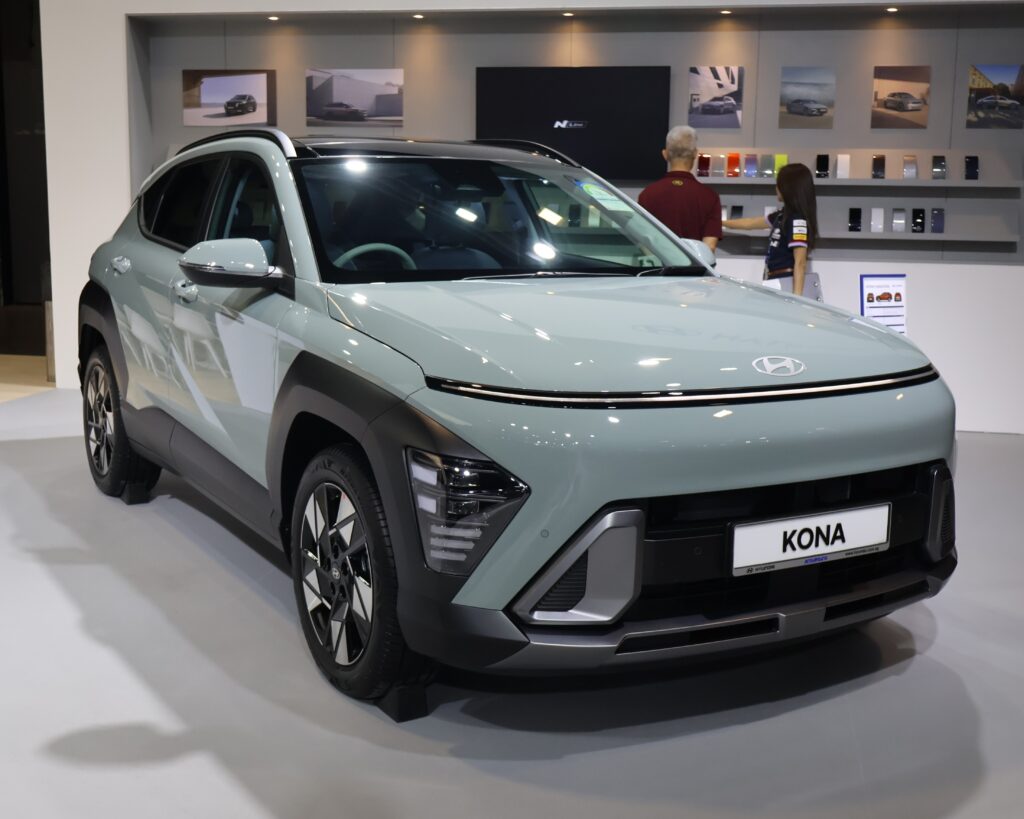
5. **2025 Hyundai Kona**
The 2025 Hyundai Kona, recognized as the Kelley Blue Book Best Buy in its class, offers surprising capability for snow driving, particularly when equipped with all-wheel drive. Adding all-wheel drive to any Kona grade incurs a $1,500 upcharge, bringing the base SE all-wheel drive model to a competitive $27,400. This subcompact SUV defies expectations with a notable amount of passenger and cargo space, making it a practical choice for diverse needs. All-wheel-drive versions of the Kona also feature a commendable 8.1 inches of ground clearance, a significant advantage for navigating snow-covered roads. It earns an excellent Expert Rating of 4.8 and an IIHS Top Safety Pick+ rating.
Standard safety features on the Kona are robust and highly beneficial for winter driving. Every model comes with front collision warning, providing early alerts to potential hazards, along with automatic emergency braking to assist in preventing or mitigating collisions. Lane-keeping assist helps maintain the vehicle’s position, crucial on slippery surfaces. Blind-spot monitoring is also standard, offering enhanced awareness of surrounding traffic in conditions where visibility might be reduced. Standard LED headlights with high-beam assist further improve nighttime and poor-weather visibility.
The base SE all-wheel drive trim, at $27,400, presents exceptional value, offering a solid foundation of winter-ready features without a hefty price tag. Its inherent all-wheel-drive capability combined with a strong suite of driver aids makes it a compelling option for budget-conscious consumers. The inclusion of LED headlights with high-beam assist even in the base model ensures a confident driving experience when daylight wanes or snow falls heavily.
For those seeking an elevated level of comfort and convenience in their winter vehicle, stepping up to the SEL grade is a highly recommended move. For an additional $1,350, the SEL trim adds heated mirrors with integrated turn signals, ensuring clear rearward visibility in icy conditions. Heated front seats provide welcome warmth, making chilly starts much more comfortable, while dual-zone automatic climate control allows for personalized temperature settings for both driver and passenger. These features significantly enhance the overall winter driving experience.
The Hyundai Kona’s compact size, combined with its all-wheel drive system and thoughtful winter amenities, makes it an agile and capable performer in snowy urban and suburban environments. Power comes from a 147-hp 2.0-liter 4-cylinder engine connected to an automatic transmission, delivering efficient and responsive performance. This blend of features, value, and capability solidifies the 2025 Hyundai Kona as a top choice for drivers seeking a reliable snow-handling SUV in the subcompact segment.
Having explored the initial selection of top-performing 2025 SUVs for snow, we now turn our attention to the nuanced engineering that empowers these vehicles to excel in challenging winter conditions. Beyond individual models, understanding the core drivetrain technologies, critical safety innovations, and how to interpret vital crash test data is crucial for any consumer seeking optimal winter readiness. This comprehensive review will delve deeper into these foundational elements before presenting our final five recommended SUVs.
### Which Is Better: All-Wheel Drive or 4-Wheel Drive?
Any discussion about the best cars for snow fundamentally begins with the drivetrain, the system that delivers power from the engine to the wheels. While front-wheel-drive (FWD) and rear-wheel-drive (RWD) systems have their pros and cons, we typically bypass 2-wheel-drive (2WD) options for snow recommendations, as they offer limited assistance for inexperienced drivers on slippery surfaces. Our focus instead shifts to the more capable all-wheel-drive (AWD) and 4-wheel-drive (4WD) systems, often mistakenly used interchangeably, but which operate with distinct advantages.
All-wheel drive systems function with minimal or no driver input. Most AWD vehicles operate primarily as front-wheel drive (like the Honda CR-V) or rear-wheel drive (such as the BMW 3 Series) until conditions demand power be sent to the passive axle. With part-time AWD, the most common type, if wheel slippage is detected on the primary drive wheels, the system automatically and quickly transfers a percentage of engine torque to the other axle. This “on-demand” system often prioritizes fuel efficiency by defaulting to 2-wheel drive on dry pavement, with a minimal fuel economy penalty of typically 1-2 mpg. Full-time AWD systems, like those found in most Subarus, consistently send torque to all four wheels, automatically adjusting power as needed, often with a similarly minimal impact on fuel efficiency. These systems are electronically controlled, responding to changing road conditions almost instantaneously, often before the driver even perceives wheel spin.
Four-wheel drive systems, while also sending power to all four wheels, create a mechanical lock between the front and rear axles, ensuring they turn at the same speed. This significantly reduces wheel spin in low-traction environments such as deep snow or gravel. However, this locked state can impair cornering ability compared to 2-wheel drive or AWD. Part-time 4WD is the most common variant, typically found on vehicles that default to rear-wheel drive. Drivers engage 4-Hi (high range) for snowy conditions or moderate trails, allowing for superior off-road traction. Modern systems often permit switching from 2-Hi to 4-Hi without stopping, with some even automating the process. However, 4-Hi is not recommended for normal on-road use, as prolonged engagement on dry pavement risks vehicle damage and incurs a fuel economy penalty due to added weight.
For extreme conditions or off-road crawling, 4-Lo (low range) can be engaged, providing maximum torque at every wheel by utilizing a low gear ratio. This setting is strictly for low speeds and requires the vehicle to be stopped for engagement. While 4-Lo is overkill for most ice and snow scenarios, it can be invaluable in exceptionally deep snow or challenging terrain. Ultimately, for most drivers encountering typical ice and snow situations, all-wheel drive is recommended. Its automatic, seamless adjustments to changing road conditions, coupled with a lesser impact on fuel economy, make it specifically engineered for competent and secure normal snowy and icy driving.
### What Are the Top Safety Features for Driving in Snow?
Modern vehicles offer an impressive array of safety and driver-assist features that extend far beyond basic traction and stability control, both of which have been standard on passenger vehicles since 2013. These technologies significantly enhance control and reduce stress when navigating snowy or icy conditions, actively contributing to safer winter driving. Understanding these features can guide consumers toward vehicles that offer a truly reassuring experience when the weather turns harsh.
Visibility is paramount in winter, and several technologies address this directly. **Adaptive headlights** can rotate to illuminate the direction the steering wheel is turned or use cornering lights, greatly improving visibility around bends in snowy conditions. **LED headlights and taillights** provide brighter, more focused illumination than traditional halogen lights, allowing drivers to see farther ahead and ensuring greater vehicle visibility to others. Enhancing this, **automatic high beams** detect oncoming or preceding vehicles and automatically switch between high and low beams, maintaining optimal forward visibility without distracting other drivers. Crucially, **headlight washers and wipers** actively clear snow and road salt from headlights, preventing light output reduction and preserving vital illumination. Similarly, **rain-sensing wipers** automatically engage when moisture, including snow, is detected on the windshield, providing consistent, hands-free visibility.
Beyond lighting, advanced driver-assist systems are critical. **Blind-spot monitoring** detects vehicles in adjacent lanes that may be obscured by mirrors or snowfall, preventing hazardous lane changes, which can easily lead to loss of control on slippery roads if sudden steering inputs are made. Working in tandem, **rear cross-traffic alert** warns of approaching vehicles when backing up, a common scenario for fender benders, especially when slippery pavement makes stopping difficult. **Forward collision warning and automatic emergency braking** utilize sensors and cameras to detect hazards like stopped vehicles, pedestrians, or cyclists, providing warnings and, if necessary, automatically applying brakes to prevent or mitigate collisions—a life-saving feature in low-visibility or sudden-stop winter scenarios.
Comfort and convenience features also play a significant role in reducing driver fatigue and enhancing safety. **Heated mirrors** effectively melt fog, ice, and snow, ensuring clear side and rearward views before and during a drive. **Heated front seats and steering wheels** won’t prevent an accident, but they dramatically improve comfort in freezing weather, allowing drivers to remain focused. While less common, **heated windshields and wipers** offer tremendous convenience by quickly clearing ice and snow. **Automatic temperature control** provides a set-it-and-forget-it climate, allowing the driver to concentrate fully on the challenging road ahead. Lastly, **ground clearance**, the distance between the pavement and the vehicle’s undercarriage, is a simple yet vital physical attribute; more clearance reduces the likelihood of plowing through deep snow and helps avoid unseen hazards hidden beneath a snowy blanket.
### How To Interpret Crash Test Scores
While our selection of top SUVs for snow focuses on performance and capability in winter conditions, understanding a vehicle’s crash test scores provides crucial insight into its overall safety and occupant protection. Reputable organizations like the National Highway Traffic Safety Administration (NHTSA) and the Insurance Institute for Highway Safety (IIHS) conduct rigorous tests, and interpreting their results offers invaluable information for consumers.
The **NHTSA** performs three primary crash tests: frontal crash, side crash, and rollover crash. Each test, as well as an overall vehicle score, is rated on a 1-to-5 star system, with 5 stars being the highest possible score. These ratings provide a straightforward indication of a vehicle’s performance in specific impact scenarios, helping consumers compare the basic crashworthiness of different models.
The **IIHS** conducts more detailed crash evaluations, focusing on four main tests for modern vehicles: driver-side small overlap front, passenger-side small overlap front, updated moderate overlap front, and updated side impact. The side-test protocol technically includes both right and left sides, though results are typically consolidated into a single score. IIHS scores vehicles using a four-tier system: Good, Acceptable, Marginal, and Poor, in descending order of performance. Since 2021, the IIHS has updated its side crash-test protocol with a heavier ram, and as of 2023, the updated moderate overlap front test also became part of the scoring, reflecting more stringent safety standards. Beyond crash tests, the IIHS also evaluates headlights and vehicle-to-pedestrian front crash protection, using Superior, Advanced, and Basic ratings, and assesses LATCH child-seat anchors. Vehicles achieving the highest marks in both crash tests and other evaluations earn the coveted **Top Safety Pick (TSP)** and **Top Safety Pick+ (TSP+)** awards, signifying exceptional overall safety performance.
—
### The Remaining Top 2025 SUVs for Snow
Now, let’s explore the final five standout 2025 SUVs that promise exceptional performance when winter strikes, building on our understanding of critical features and safety evaluations.
Car Model Information: 2024 Hyundai KONA EV SEL
Name: Hyundai Kona
Caption: Hyundai Kona N Line (SX2)
Manufacturer: Hyundai Motor Company
Aka: Hyundai Kauai (Portugal)
Production: 2017–present
ModelYears: 2018–present
Class: Subcompact crossover SUV
BodyStyle: SUV
Layout: ubl
Categories: 2020s cars, All-wheel-drive vehicles, All Wikipedia articles in need of updating, Articles containing Chinese-language text, Articles containing Korean-language text
Summary: The Hyundai Kona (Korean: 현대 코나) is a subcompact crossover SUV produced by the South Korean manufacturer Hyundai. The first-generation Kona debuted in June 2017 and the production version was revealed later that year. It is positioned between the Venue or Bayon and the Tucson in Hyundai crossover SUV line-up. The battery electric version called the Kona Electric (or Kona EV) was first launched in South Korea during the first half of 2018 and rolled out gradually worldwide afterwards.
Get more information about: Hyundai Kona
Buying a high-performing used car >>>
Brand: Hyundai Model: Kona
Price: $25,299 Mileage: 14,328 mi.
Read more about: Don’t Waste Your Cash: Understanding EV Battery Longevity and Replacement Realities
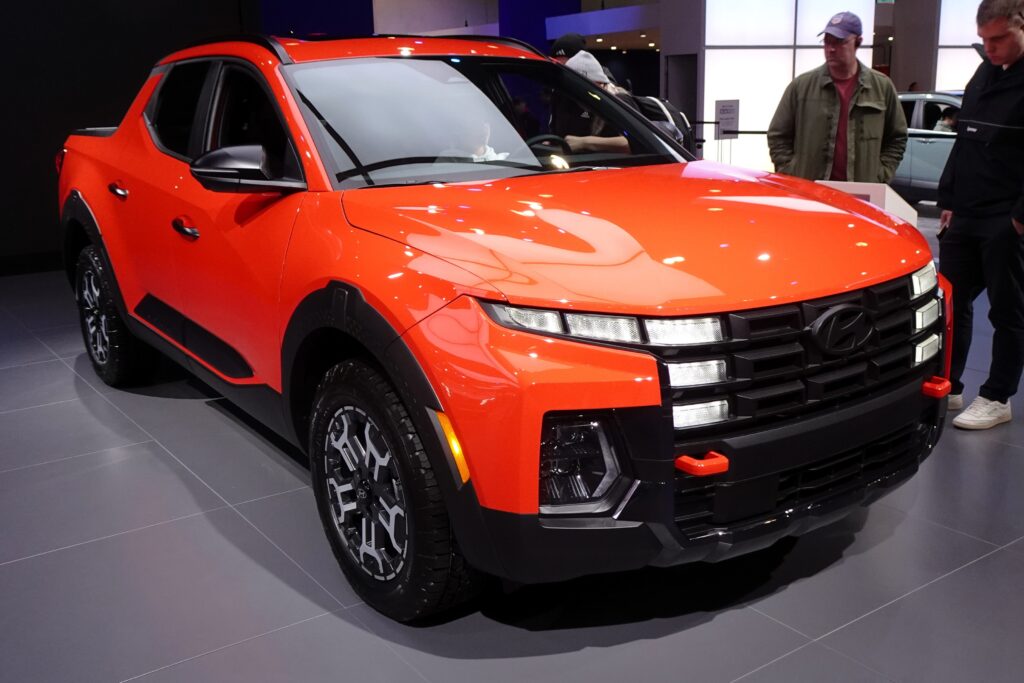
6. **2025 Hyundai Santa Cruz**
While Hyundai classifies the Santa Cruz as a sport adventure vehicle rather than a traditional SUV, it shares its platform with the Tucson SUV and delivers similar comfort and features, making it a compelling option for snow handling. All-wheel drive is standard on its upper trims and a $1,500 option on the SE and SEL grades, proving its dedication to diverse driving conditions. Though not a conventional pickup, its compact size and SUV-like characteristics make it a unique and capable choice for navigating winter roads.
The base SE model, when equipped with AWD, offers a respectable foundation of winter features. It includes standard LED taillights, remote keyless entry, and LED headlights with high-beam assist, crucial for illuminating snowy paths. Driver aids such as forward collision warning with automatic emergency braking, lane-keeping assist, and rear cross-traffic avoidance assist are also standard, providing an essential layer of safety that helps prevent incidents on slippery surfaces.
To significantly enhance winter comfort and convenience, we highly recommend upgrading to the SEL trim for an additional $1,700. This move brings heated front seats for immediate warmth, heated outboard mirrors to clear ice and fog, and dual-zone automatic climate control for personalized cabin temperatures. Remote engine start is also included, allowing drivers to warm up the vehicle and defrost the windshield before venturing out into the cold.
Powering the Santa Cruz is a 191-hp 2.5-liter 4-cylinder engine, paired with an 8-speed automatic transmission. This powertrain ensures a reliable and responsive performance, adept at managing various driving demands, including those posed by snowy urban and suburban environments. Its unique blend of utility and SUV-like comfort, coupled with robust winter-ready features, positions the 2025 Hyundai Santa Cruz as a surprisingly strong contender for snow driving.
Car Model Information: 2024 Ford F-150 XLT
Name: Hyundai Santa Cruz
Manufacturer: Hyundai Motor Company
ModelCode: NX4a OB
Production: June 2021 – present
ModelYears: 2022–present
Assembly: Montgomery, Alabama
Class: Pickup_truck#Compact_pickup_truck
BodyStyle: pickup truck
Layout: Front-engine, front-wheel-drive,Front-engine, all-wheel-drive
Platform: Hyundai-Kia N platforms
Chassis: Unibody
Related: Hyundai Tucson#NX4
Engine: Petrol engine,Hyundai Smartstream Engine#G4KN,Hyundai Smartstream Engine#G4KP
Transmission: List of Hyundai transmissions#A8F27,automatic transmission
Wheelbase: 3005 mm
Abbr: on
Length: 4970 mm
Width: 1905 mm
Height: 1695 mm
Weight: convert
Sp: us
Categories: All-wheel-drive vehicles, All Wikipedia articles written in American English, Articles with short description, Cars introduced in 2021, Commons category link from Wikidata
Summary: The Hyundai Santa Cruz is a four-door compact pickup truck manufactured and marketed by Hyundai. Released in 2021 for the 2022 model year, the Santa Cruz is the first four-door pickup truck sold by Hyundai in the North American market. The vehicle is based on the Tucson crossover SUV, and uses a unibody chassis design.
Industry analysts expected the Santa Cruz to attract car or crossover SUV buyers instead of people who have owned a larger, traditional pickup truck.
Get more information about: Hyundai Santa Cruz
Buying a high-performing used car >>>
Brand: Hyundai Model: Santa Cruz
Price: $41,604 Mileage: 9,645 mi.
Read more about: Navigating the SUV Market: 14 Models U.S. Consumers Should Approach with Caution in 2024-2025
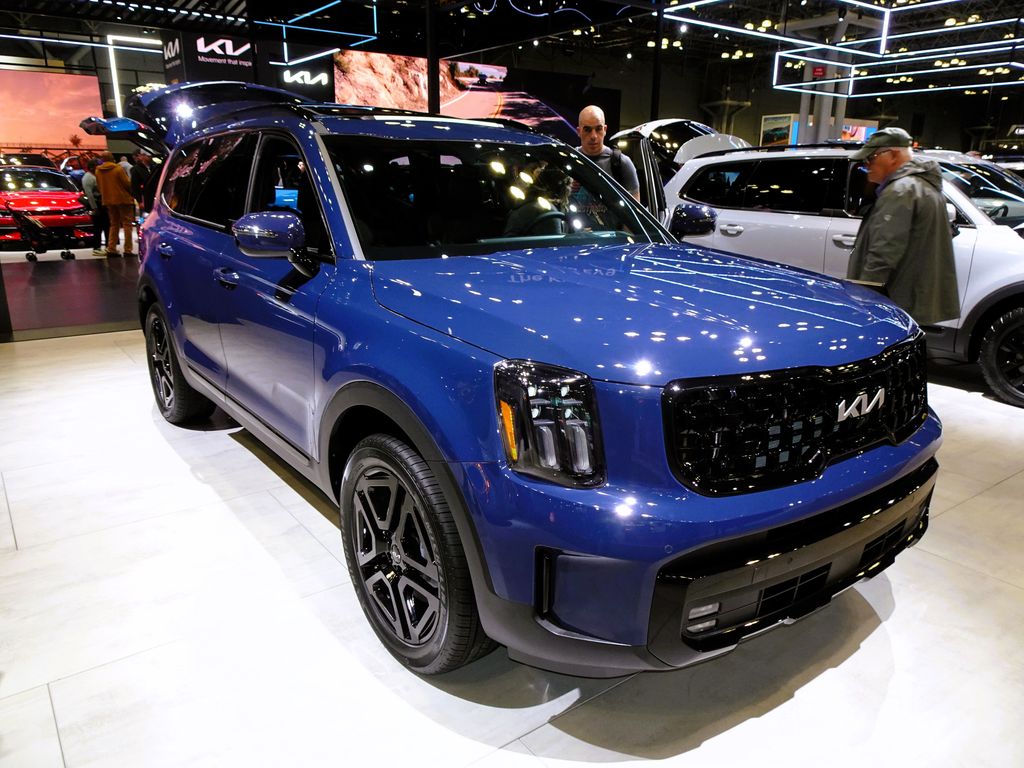
7. **2025 Kia Telluride**
The 2025 Kia Telluride continues to impress, building on its reputation as a Best Buy Midsize SUV for 2025 with an Expert Rating of 4.8. This 3-row SUV offers all-wheel drive across its lineup, excluding the base LX trim, making the S trim, starting at $42,805, an excellent entry point for winter capability. Its generous eight inches of ground clearance is a significant advantage, allowing it to comfortably clear deeper snow accumulation without bottoming out.
Even at the S trim level, the Telluride is well-equipped for snow, featuring remote start to warm the cabin before entry, and heated mirrors to ensure clear visibility. A comprehensive suite of driver aids is also standard, including forward collision warning, automatic emergency braking, blind-spot monitor, and rear cross-traffic alert. These systems work in concert to provide proactive safety and enhance driver awareness, especially in reduced visibility or slippery conditions.
For a truly optimized winter driving experience, we strongly recommend stepping up to the EX trim. This upgrade unlocks or qualifies for additional essential features, such as LED headlights for superior nighttime illumination and automatic high beams to effortlessly manage light output. Crucially, the EX trim includes heated seats, providing immediate and sustained comfort during frigid winter commutes, making it a truly desirable choice for cold weather.
Power for the Kia Telluride comes from a robust 291-hp 3.6-liter V6 engine, paired with a smooth 8-speed automatic transmission. This powertrain delivers ample strength and responsiveness, ensuring confident acceleration and reliable performance even when navigating challenging snowy roads. With its combination of spaciousness, comprehensive safety features, and strong winter-ready amenities, the 2025 Kia Telluride stands out as an outstanding choice for families needing a highly competent snow SUV.
Car Model Information: 2022 Kia Telluride SX
Name: Kia Telluride
Caption: 2022 Kia Telluride EX (US)
Manufacturer: Kia
ModelCode: ON
Production: February 2019 – present
ModelYears: 2020–present (North America)
Assembly: West Point, Georgia
Designer: Park Byung-Kyu
Class: Mid-size crossover SUV
BodyStyle: SUV
Layout: unbulleted list
Chassis: Unibody
Related: Hyundai Palisade
Engine: unbulleted list
Transmission: List of Hyundai transmissions#A8LF1,Automatic transmission
Wheelbase: 114.2 in
Abbr: on
Length: 196.9 in
Width: 78.3 in
Height: 68.9 in
Weight: convert
Predecessor: Kia Mohave
Sp: us
Categories: All Wikipedia articles written in American English, Articles with short description, Cars introduced in 2019, Commons category link is on Wikidata, Crossover sport utility vehicles
Summary: The Kia Telluride is a mid-size crossover SUV with three-row seating manufactured and marketed by Kia since 2019. Positioned above the smaller Sorento, the Telluride was previewed as a concept car in 2016, with the production model debuting in early 2019 as a 2020 model. It shares components and specifications with its sister model, the Hyundai Palisade, including its engine, transmission, and wheelbase. Named after the town of Telluride, Colorado, the Telluride is the largest vehicle Kia has manufactured in the United States.
Get more information about: Kia Telluride
Buying a high-performing used car >>>
Brand: Kia Model: Telluride
Price: $28,500 Mileage: 61,098 mi.
Read more about: Smart Choices for the Golden Years: 12 Top SUVs Retirees Should Consider Buying in 2025
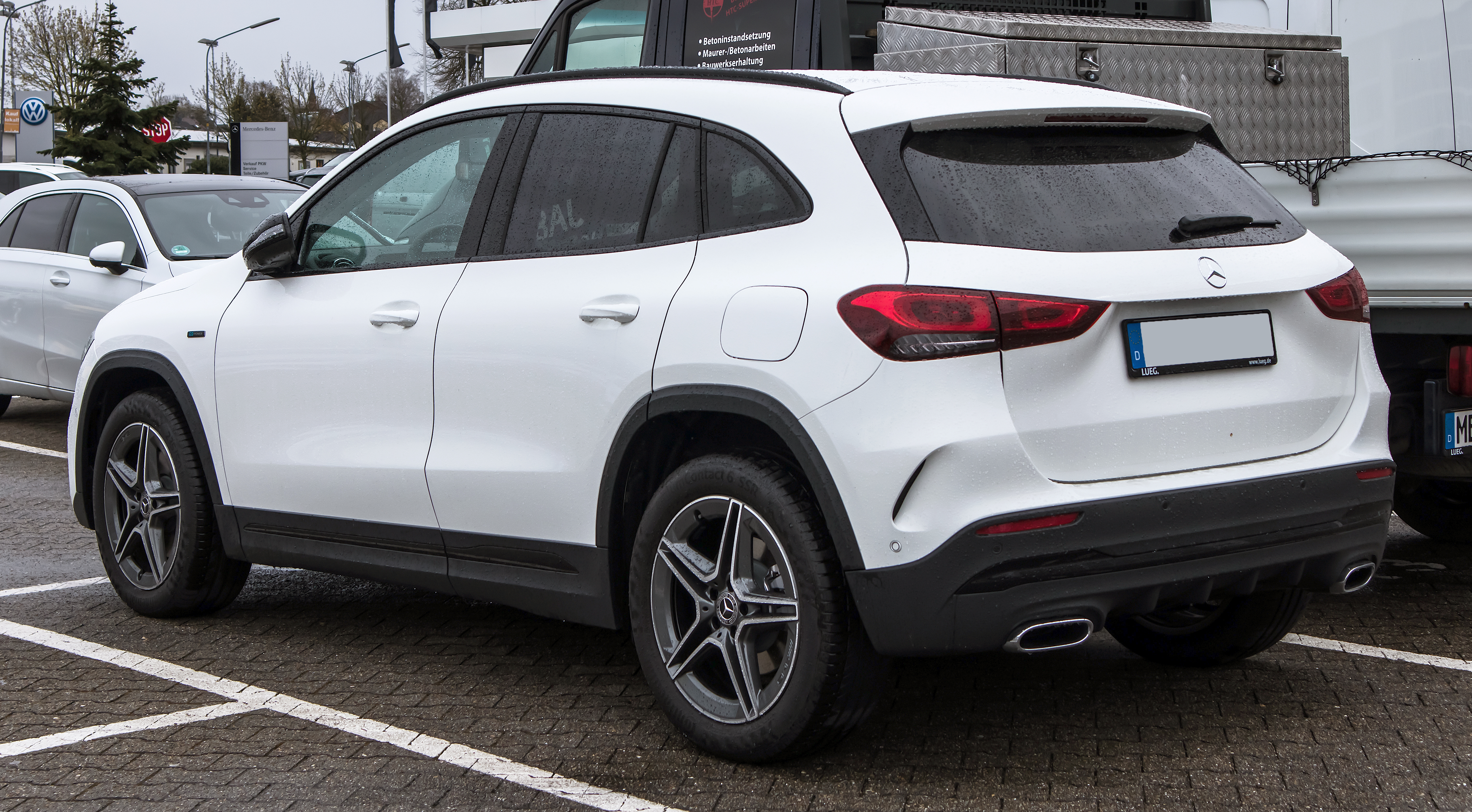
8. **2025 Mercedes-Benz GLA 250**
As Mercedes-Benz’s entry-level SUV, the 2025 GLA 250 offers surprising capabilities for snow driving, especially when upgraded to its all-wheel-drive system, known as 4Matic. Adding the 4Matic system increases the base price by $2,000, bringing the total for the GLA 250 4Matic to $46,150. This compact luxury SUV blends agile handling with a robust feature set, making it a sophisticated option for confronting winter weather.
The GLA 250 4Matic comes with a strong foundation of standard features essential for snowy conditions. These include heated mirrors that swiftly clear fog, ice, and snow, along with cross-wind assist to maintain stability in gusts. Front collision warning, automatic emergency braking, and blind-spot monitoring are also standard, providing critical layers of active safety. Standard LED headlights and taillights ensure superior visibility, complemented by rain-sensing wipers that automatically adapt to precipitation.
While many winter features are standard, Mercedes-Benz offers further enhancements for those seeking maximum comfort. Heated seats are available for an additional $500, providing welcome warmth on cold mornings. For a comprehensive winter package, the $450 Winter Package adds a heated steering wheel and heated windshield washer nozzles, both of which significantly improve comfort and convenience when temperatures drop and ice forms. These thoughtful additions elevate the GLA 250’s winter readiness.
Power for the GLA 250 is delivered by a 221-hp 2.0-liter turbocharged 4-cylinder engine, precisely managed by an 8-speed automatic transmission. This powertrain provides a refined and energetic driving experience, capable of confidently navigating snowy urban landscapes and icy suburban roads. The 2025 Mercedes-Benz GLA 250 4Matic stands as an appealing choice for consumers seeking a luxurious yet highly capable compact SUV for winter driving.
Car Model Information: 2024 Ford F-150 XLT
Caption: Mercedes-Benz GLA 250 e AMG Line (H 247)
Name: Mercedes-Benz GLA
Manufacturer: ubl
Production: 2013–present
ModelYears: 2014–present
Class: Subcompact luxury crossover SUV
Layout: ubl
BodyStyle: SUV
Categories: 2020s cars, All-wheel-drive vehicles, Articles with short description, CS1 German-language sources (de), CS1 Mexican Spanish-language sources (es-mx)
Summary: The Mercedes-Benz GLA is a subcompact luxury crossover SUV manufactured and marketed by Mercedes-Benz over two generations. It is essentially the SUV equivalent of the A-Class, and the smallest SUV marketed by the brand. The production version was revealed in August 2013 ahead of the 2013 Frankfurt Auto Show in September 2013.
The GLA is powered by a range of petrol and diesel 4-cylinder engines, and comes in either front-wheel drive or all-wheel drive, the latter marketed by Mercedes as 4Matic.
The GLA nameplate aligns with Mercedes SUV nomenclature, where GL stands for Geländewagen (German for off-road vehicle) and the A designates its overall place in the Mercedes range, in this class, the smallest or A-Class.
Get more information about: Mercedes-Benz GLA
Buying a high-performing used car >>>
Brand: Mercedes-Benz Model: GLA 250
Price: $41,604 Mileage: 9,645 mi.
Read more about: The Hidden Hazards: 12 Common Driving Laws You’re Likely Breaking Without Realizing It
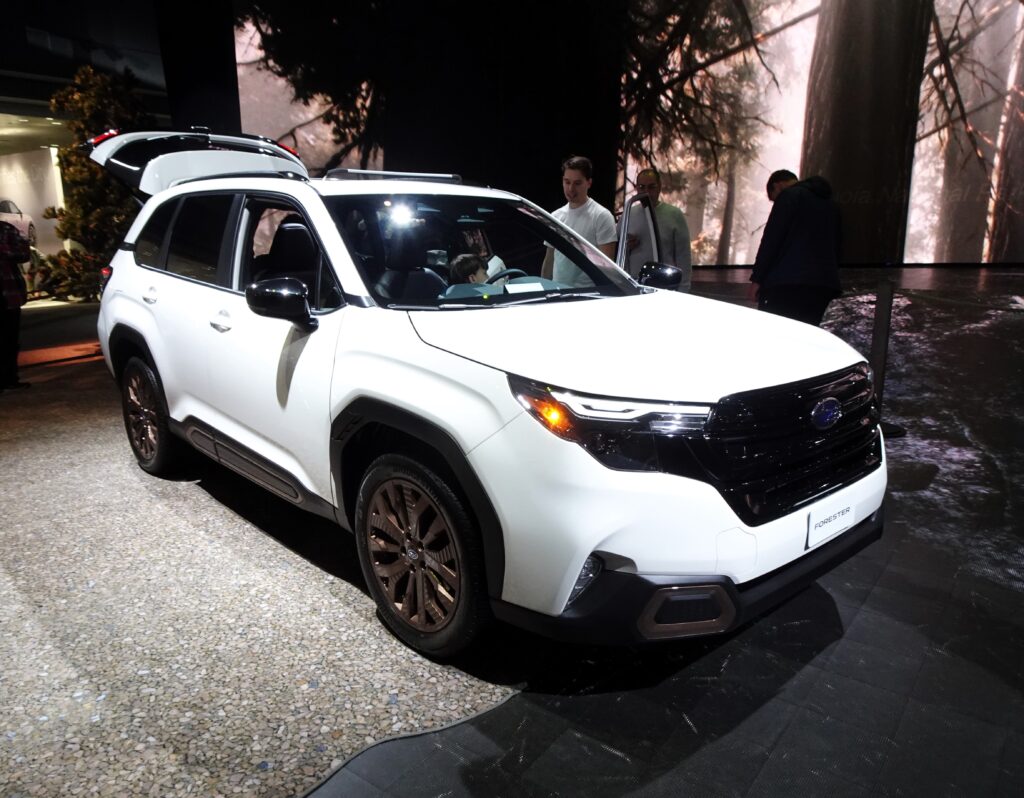
9. **2025 Subaru Forester**
Subaru has long been synonymous with exceptional winter performance, and the 2025 Forester proudly upholds this tradition. Every Subaru Forester model comes standard with symmetrical all-wheel drive, providing a naturally balanced and highly effective system for maximizing traction on slippery surfaces. Complementing this, an impressive 8.7 inches of ground clearance ensures the Forester can easily traverse deeper snow and avoid hidden hazards beneath the winter blanket.
The base Forester is well-equipped for snow from the outset. It includes LED adaptive headlights that enhance visibility by adjusting with steering input, automatic high beams for effortless light management, and automatic climate control for consistent cabin comfort. A rearview camera washer helps maintain clear rearward visibility, while forward collision warning with automatic emergency braking provides crucial safety interventions in adverse conditions.
To truly unlock the Forester’s full winter potential, we believe moving up to the Premium trim is a worthwhile investment. This upgrade qualifies you for essential features like blind-spot monitoring and rear cross-traffic alert, significantly enhancing driver awareness in low-visibility snowy conditions. The Premium trim also adds fog lights for improved vision in severe weather, a windshield wiper de-icer, heated front seats for immediate warmth, and heated outboard mirrors for consistently clear views.
The Forester is powered by a reliable 182-hp 2.5-liter 4-cylinder engine, which sends its output to all four wheels via an automatic transmission (CVT). This powertrain, combined with Subaru’s renowned AWD system and a comprehensive suite of winter-focused features, makes the 2025 Subaru Forester an exceptionally trustworthy and competent SUV for navigating any snowy environment. Its blend of capability, safety, and practicality solidifies its position as a top choice for winter readiness.
—
Car Model Information: 2021 Subaru Forester Sport
Name: Subaru Forester
Manufacturer: Subaru
Production: 1997–present
Class: Compact crossover SUV
BodyStyle: SUV
Related: Subaru Impreza
Layout: Front-engine, all-wheel drive
Predecessor: Subaru Bighorn
Categories: 2000s cars, 2010s cars, All-wheel-drive vehicles, All Wikipedia articles written in American English, All articles containing potentially dated statements
Summary: The Subaru Forester (Japanese: スバル・フォレスター, Hepburn: Subaru Foresutā) is a compact crossover SUV that has been manufactured by Subaru since 1997. The first generation was built on the platform of the Impreza in the style of a taller station wagon, a style that continued to the second generation, while the third-generation model onwards moved towards a crossover SUV design. A performance model was available for the second-generation Forester in Japan as the Forester STi.
Get more information about: Subaru Forester
Buying a high-performing used car >>>
Brand: Subaru Model: Forester
Price: $24,987 Mileage: 30,822 mi.
Read more about: Buyer Beware: 8 SUVs That Are Known to Fail Frequently Before 100,000 Miles
Selecting the best SUV for snow involves a careful consideration of its drivetrain, safety innovations, comfort features, and proven crashworthiness. The 2025 models we’ve highlighted, from the agile Hyundai Kona to the robust Kia Telluride, exemplify how modern engineering delivers confidence and capability when the flakes begin to fall. By prioritizing features like intelligent all-wheel drive, advanced driver-assist systems, and thoughtful amenities that combat the cold, consumers can make informed decisions to ensure their winter journeys are not just possible, but genuinely safe and comfortable. Trustworthy information empowers smarter choices, paving the way for confident winter driving experiences for years to come.

